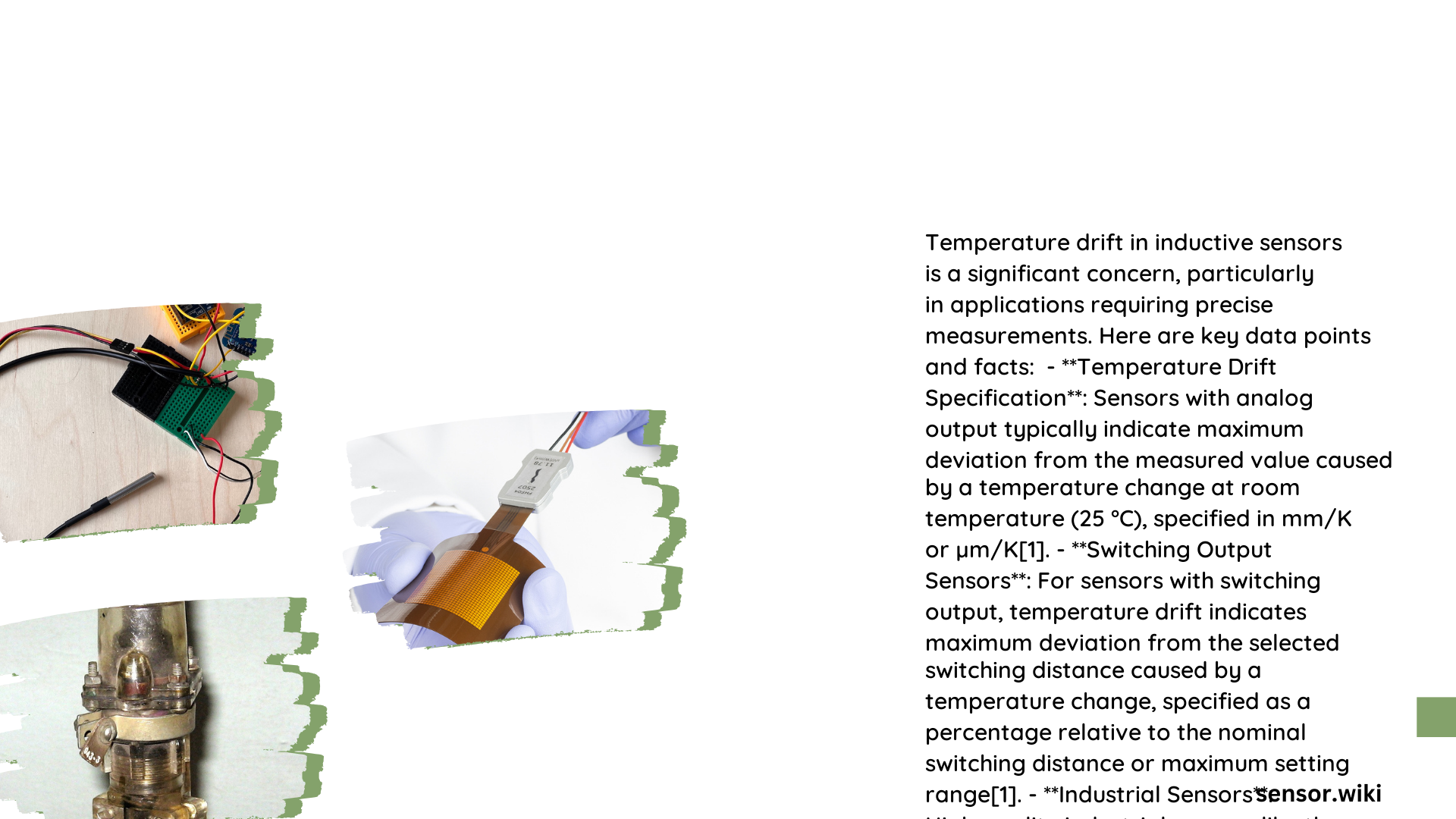Inductive sensor temperature drift represents a complex phenomenon where sensor performance fluctuates with temperature variations, potentially compromising measurement precision. Engineers and researchers must understand the intricate mechanisms causing these variations to develop robust compensation strategies that ensure consistent and reliable sensor output across diverse environmental conditions.
What Causes Temperature Drift in Inductive Sensors?
Temperature drift emerges from multiple interconnected factors that influence sensor electrical and mechanical characteristics:
Physical Mechanism Breakdown
- Material Property Changes
- Thermal expansion of sensor components
- Variations in electrical conductivity
- Molecular structure modifications
Quantitative Drift Characteristics
| Temperature Range | Typical Drift Rate | Potential Impact |
|---|---|---|
| 0-50°C | ±3.2 µm/K | Low precision measurements |
| 50-100°C | ±4.8 µm/K | Moderate measurement uncertainty |
| >100°C | Variable | High potential measurement error |
How Do Temperature Variations Affect Sensor Performance?

Temperature fluctuations induce several critical performance modifications:
- Electrical Resistance Modifications
- Increased resistance at higher temperatures
- Non-linear resistance changes
-
Potential signal distortion
-
Mechanical Deformation
- Thermal expansion of sensor materials
- Microscopic dimensional changes
- Altered sensing element geometry
What Are Effective Calibration Techniques?
Precision Calibration Process
- Utilize temperature-controlled chambers
- Measure sensor output across multiple temperature points
- Generate comprehensive correction curves
- Implement mathematical compensation algorithms
Advanced Compensation Strategies
- Dynamic Temperature Mapping
- Real-time temperature monitoring
- Instantaneous output correction
- Adaptive compensation algorithms
Can Temperature Drift Be Completely Eliminated?
Complete elimination remains challenging, but significant mitigation is possible through:
- Sophisticated Calibration Techniques
- Advanced Material Selection
- Integrated Temperature Compensation Circuits
- Precision Manufacturing Processes
What Are Practical Implementation Considerations?
Cost-Effectiveness Analysis
- Initial calibration equipment investment
- Periodic recalibration expenses
- Long-term measurement accuracy benefits
Recommended Best Practices
- Regular sensor performance assessment
- Comprehensive environmental testing
- Continuous monitoring of drift characteristics
- Documentation of calibration history
Technical Compensation Formula
The temperature drift can be mathematically represented as:
Temperature Drift = [(Output at High Temp - Output at Calibration Temp) / Output at Calibration Temp] × 100%
Emerging Technologies and Future Outlook
Ongoing research focuses on:
– Nanomaterial-based sensor designs
– Artificial intelligence-driven compensation algorithms
– Self-calibrating sensor architectures
Practical Recommendations for Engineers
- Select sensors with inherently low-temperature sensitivity
- Implement robust calibration protocols
- Use temperature compensation techniques
- Consider environmental operating conditions
Conclusion
Effective management of inductive sensor temperature drift requires a multifaceted approach combining advanced materials, sophisticated calibration techniques, and continuous monitoring strategies.
